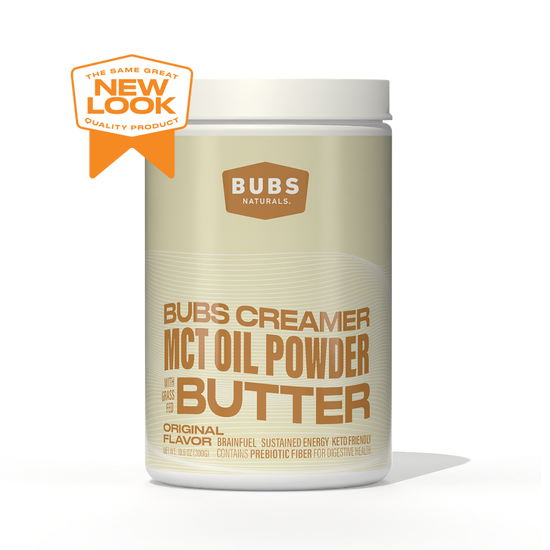Table of Contents
- Introduction
- The Different Types of Coffee Creamers
- How Long Can Unopened Coffee Creamer Sit Out?
- Signs of Spoilage
- Best Practices for Extending Freshness
- When to Discard Coffee Creamer
- Conclusion
- FAQ
When it comes to our morning coffee rituals, the addition of creamer can transform a simple cup of coffee into a delightful experience. However, one question that often lingers in the back of our minds is, "How long can unopened coffee creamer sit out?" This query is not just a matter of curiosity; it holds the key to ensuring that our coffee remains both delicious and safe to consume.
In this blog post, we'll explore the various types of coffee creamers, their shelf lives, and the best practices for storing them to maintain their quality. Whether you're a fan of dairy-based or non-dairy creamers, understanding how to properly handle and store these products will help you avoid spoilage and waste. By the end of this post, you will not only know how long unopened coffee creamer can sit out but also gain valuable insights into extending its freshness.
Introduction
Coffee creamer is an essential addition to many coffee lovers’ routines, enhancing flavor and adding a creamy texture that many find irresistible. However, the storage and handling of coffee creamer is crucial for both taste and safety. While many of us may have a general understanding of food safety, specific guidelines for coffee creamer can often be overlooked.
Historically, the evolution of coffee creamers—from traditional dairy options to a variety of non-dairy alternatives—has expanded our choices but also added complexity to storage recommendations. As consumers, we must navigate the differences in shelf life and storage needs of these products.
In this blog post, we will delve into various aspects of coffee creamer storage, including:
- The types of coffee creamers and their respective shelf lives
- How long unopened coffee creamer can safely sit out
- Signs of spoilage to watch for
- Best practices for extending the freshness of your creamer
- When to discard creamer to ensure safety
By understanding these key points, we can make informed decisions about our coffee creamer usage, ultimately leading to a better coffee experience.
The Different Types of Coffee Creamers
Before we dive into storage specifics, it’s essential to recognize the different types of coffee creamers available:
1. Dairy-Based Creamers
These creamers are typically made from milk or cream and are often found in the refrigerated section of stores. They include half-and-half, heavy cream, and flavored creamers.
2. Non-Dairy Creamers
Often made from plant-based ingredients such as almond, soy, or coconut, non-dairy creamers can be either refrigerated or shelf-stable. They usually contain additives to enhance flavor and texture.
3. Powdered Creamers
These creamers, which can be made from milk or non-dairy sources, are shelf-stable and have a longer shelf life compared to liquid creamers. They are typically used for convenience, especially in situations where refrigeration isn't available.
Understanding these categories is crucial as it directly affects the storage and shelf life of your coffee creamer.
How Long Can Unopened Coffee Creamer Sit Out?
The storage requirements for unopened coffee creamers can vary based on their type. Here are some general guidelines:
Dairy-Based Creamers
Unopened dairy creamers should ideally be stored in the refrigerator. However, if left out at room temperature, they should not sit out for more than two hours. This is due to the risk of bacterial growth when exposed to temperatures above 40°F (4°C).
Non-Dairy Creamers
Shelf-stable non-dairy creamers can safely sit out at room temperature until they are opened. Once opened, the same two-hour rule applies, and they should be refrigerated after use.
Powdered Creamers
Unopened powdered creamers can also sit out at room temperature for extended periods, often up to 24 months when stored in a cool, dry place. However, once opened, they should be kept in an airtight container to maintain freshness.
Summary of Guidelines
- Dairy-Based Creamers: No more than 2 hours at room temperature.
- Non-Dairy Creamers: Room temperature until opened; no more than 2 hours after opening.
- Powdered Creamers: Can sit out indefinitely until opened; once opened, store in an airtight container.
Signs of Spoilage
Knowing how to identify whether your coffee creamer has gone bad is vital for your health and enjoyment. Here are some common signs to look for:
- Sour Smell: If your creamer smells off or sour, it's best to discard it.
- Curdled Texture: If the creamer appears clumpy or curdled, it has likely spoiled and should not be consumed.
- Off Taste: If you notice an unusual or sour taste upon tasting, err on the side of caution and throw it away.
Best Practices for Extending Freshness
To ensure your coffee creamer stays fresh for as long as possible, follow these best practices:
- Refrigerate After Opening: Always store opened creamers in the refrigerator, even if they are non-dairy.
- Keep Tightly Sealed: Ensure that the cap or lid is tightly closed to prevent exposure to air and bacteria.
- Avoid Contamination: Use clean utensils when serving to minimize the introduction of bacteria.
- Store in a Cool, Dry Place: For unopened powdered creamers, store them away from heat sources and moisture.
By adopting these practices, you can extend the shelf life of your favorite coffee creamers and reduce waste.
When to Discard Coffee Creamer
It’s important to be vigilant about the expiration dates on coffee creamer packaging. While some products may still be safe to consume shortly after the expiration date, it’s generally best to follow these guidelines:
- Discard creamer if it has been left out for more than the recommended time.
- If the creamer has an off smell or appearance, it's time to toss it.
- Always adhere to the expiration date on the packaging, and if in doubt, err on the side of caution.
Conclusion
In conclusion, understanding how long unopened coffee creamer can sit out is essential for enjoying your favorite coffee without risking your health. Whether you prefer dairy-based, non-dairy, or powdered creamers, proper storage and handling are key to maintaining quality and safety.
By following the guidelines outlined in this blog post, you can ensure that your coffee creamer remains fresh and delicious, enhancing your coffee experience without the worry of spoilage. Remember, when in doubt, always prioritize safety over savings.
FAQ
How long can unopened coffee creamer sit out?
Unopened dairy creamers should ideally be stored in the refrigerator, while unopened shelf-stable non-dairy creamers can sit out until opened. Once opened, both types should not be left out for more than two hours.
Can expired creamer make you sick?
Yes, consuming expired creamer, especially if it shows signs of spoilage, can lead to foodborne illness. Always check for freshness before use.
How can you tell if coffee creamer is bad?
Check for a sour smell, curdled texture, or off taste. If any of these signs are present, it's best to discard the creamer.
What happens if I drink expired coffee creamer?
Drinking expired coffee creamer may lead to mild digestive upset or more severe foodborne illness if the product has spoiled significantly.
Can you freeze coffee creamer?
While you can freeze coffee creamer, it may alter the texture. It's best to use it fresh whenever possible.
Written by:
Bubs Naturals

Butter MCT Oil Creamer
BUBS Butter MCT Oil Creamer (formerly Halo Creamer): Scientifically-Backed Brain and Body Fuel
BUBS Butter MCT Oil Creamer is your go-to for clean, fast-acting energy and focus, no crash included. It blends creamy grass-fed butter with fast-acting MCT oil powder (C8 and C10) to kickstart your day and keep you sharp. The MCTs go straight to work, giving your brain a quick boost while the grass-fed butter supports digestion and gut health.
Together, they help curb cravings, keep you feeling full longer, and support steady energy throughout the day—perfect for fueling your mornings or powering through the afternoon slump.
Starts at $36.00
Shop

